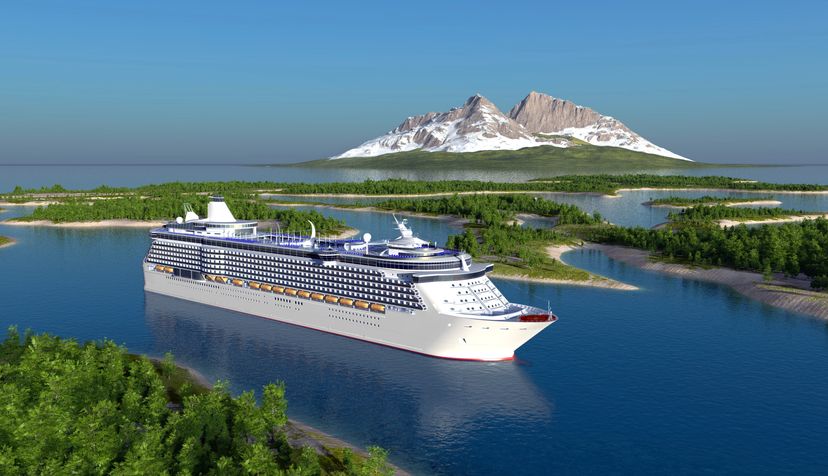
About This Quiz
How do mammoth cruise ships stay afloat? The principles of density and buoyancy plus lots of modern technology keep today's cruise ships sailing. Take this quiz to learn more about how cruise ships work.The QE2 sailed her last voyage in 2008. The Dubai government purchased the grand ship for $100 million.
The only way was to travel by ship.
With the availability of faster travel by airplane, trans-Atlantic sea travel diminished.
Advertisement
The principles of density and buoyancy keep ships afloat.
The hull is the body of the ship below the main deck.
Round-bottomed hulls are more stable and seaworthy than V-hulls.
Advertisement
The round-bottomed hull creates a slower moving ship, but its smooth movement makes it a good choice for cruises.
Modern cruise ships use gas turbines or diesel engines.
Cruise ships max out at about 30 knots.
Advertisement
RMS Titanic did not have the turning ability to steer clear of an iceberg. Too bad it did not have azimuth thrusters -- the outcome could have been much different.
A deck is a level of a ship. Higher number decks are on higher levels of the ship.
The staff captain is the captain's chief assistant.
Advertisement
Black water is from human waste, and solid waste is made up of plastics and metals.
The water from showers, dishwashing and such is dumped into the sea at least three miles from shore.
Ballast water is taken on to stabilize a ship.
Advertisement
The norovirus is a stomach flu.
The cruise ship will have a chief medical officer on staff, a doctor who can perform minor operations and other medical procedures.
The German Nazi Party owned cruise ships.
Advertisement
HMHS Britannic was a sister ship to RMS Titanic. The Britannic sank in 55 minutes, and 30 out of the 1,000 passengers died.